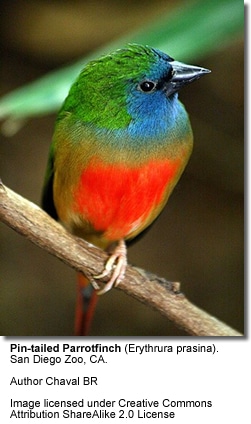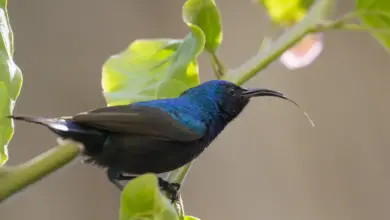Black-billed Magpies
The Black-billed Magpie (Pica [pica] hudsonia) is a bird in the crow family that inhabits the western half of North America. It is notable for its domed nests, and for being one of only four North American songbirds whose tail makes up half or more of the total body length (the others being the Yellow-billed Magpie, the Scissor-tailed Flycatcher, and the Fork-tailed Flycatcher)
Systematics and evolution
Externally, it is almost identical to the European Magpie, Pica pica, and is considered conspecific (one single species) by many sources. The American Ornithologists’ Union, however, splits it as a separate species, Pica hudsonia, on the grounds that mtDNA sequence studies place it closer to California’s Yellow-billed Magpie, Pica nuttalli, than to the European Magpie. If this view is correct, the Korean subspecies of the European Magpie, Pica pica sericea, should also be considered a separate species.
It appears that after the ancestral magpie spread over Eurasia, the Korean population became isolated, and only after that was North America colonized via Beringia (a land bridge that joined present-day Alaska and eastern Siberia at various times during the Pleistocene ice ages), where the two American magpies then differentiated. Fossil evidence indicates that the ancestral North American magpie had arrived in its current range around the mid-Pliocene (c. 3-4 mya) and that the Yellow-billed Magpie lineage split off rather soon thereafter due to the Sierra Nevada uplift and the beginning ice ages. The comparatively low genetic difference, however, suggests that some gene flow between the Black-billed and Yellow-billed magpies still occurred during interglacial periods until the Pleistocene.
Distribution and habitat
Black-billed magpies range in the north from Alaska, central western British Columbia, Alberta, Saskatchewan, and southern Manitoba, through the Rocky Mountains down south to all the Rocky Mountain states including New Mexico, Colorado, Wyoming, Idaho, and some bordering states as well. It frequents open country with thickets and scattered trees, especially riparian groves, but can be found within cities as well.
Typical size and appearance
The adult Black-billed Magpie is 45–60 cm (18–24 in) long and weighs 145-210 g (5-7.5 ounces). The tail is long and makes up half of the bird’s length. Wingspan is about 60 cm (24 in). The male is larger than the female (16-20% heavier).
The bird is black with white shoulders, a white belly, and iridescent dark blue-green wings and tail. There are large white markings on the primaries (longest wing feathers), clearly visible in flight.
Reproduction
Adult magpie pairs stay together year-round and usually for life unless one dies, in which case the remaining magpie finds another mate.
Magpies nest individually, frequently toward the top of deciduous or evergreen trees or tall shrubs. Only the nest tree is defended, and so it is possible for nests to be somewhat clumped in space. When this happens (usually in areas with a limited number of trees or with abundant food resources), a diffuse colony is formed.
Nests are loose but large accumulations of branches, twigs, mud, grass, rootlets, bark strips, vines, needles, and other materials, with branches and twigs constituting the base and framework. The nest cup is lined with fine rootlets, grass, and other soft material. Nests almost always include a hood or dome of loosely assembled twigs and branches and usually have one or more side entrances. Nests are built by both sexes over 40–50 days.
Old nests are repaired and used, or a new nest is built on top, with older nests thus reaching 120 cm high by 100 cm wide (48 inches high by 40 inches wide). Other bird species, including small hawks and owls, often use old magpie nests.
The breeding season for magpies is from late March to early July. They nest once a year but will re-nest if their first attempt fails.
The female lays up to thirteen eggs, but the usual clutch size is six or seven. The eggs are greenish grey, marked with browns, and 1.3 inch long. Only the female incubates, for 16–21 days. The male feeds the female throughout incubation.
Hatched young are altricial, brooded by the female but fed by both sexes. They fly three to four weeks after hatching, feed with adults for about two months, and then fly off to join other juvenile magpies.
The lifespan of a magpie in the wild is about four to six years.
Songs and calls
The most common calls of this bird are a nasal inquisitive chug chug chug, “mag? mag? mag?” or “yak yak yak”, uttered in a much higher pitch than the European Magpie’s. Many other calls also exist, such as begging calls by females to their mate or by young to their parents, and distress calls when seized by predators.
Migration
This species is mainly a permanent resident; some birds may move south or to lower elevations in winter, while others may wander east after the breeding season.
Food and foraging habits
The Black-billed Magpie is omnivorous, eating many types of insects, carrion, eggs, and rodents, as well as berries, seeds, and nuts, and also garbage and food from pets that are fed outside. It can land on large mammals, such as moose or cattle, to pick at the ticks that often plague these animals.
More typically, however, it forages on the ground, usually walking, sometimes hopping. It is known to make food caches in the ground, in a scatter-hoarding fashion. To make a cache the bird pushes or hammers its bill into the ground (or snow), forming a small hole into which it deposits or regurgitates food items. The cache is then covered with grass, leaves, or twigs. Such hoards are short-term; the food is usually recovered within a few days. The bird relocates its caches by sight and also by smell.
Flocking
The Black-billed magpie often forms loose flocks outside of the breeding season. Dominance hierarchies may develop within such flocks. Dominants can steal food from subordinates. Aggressive interactions also occur at point sources of food.
Roosting
Like American Crows, magpies tend to roost communally in winter. Every evening they fly, sometimes over long distances, to reach safe roosting sites such as dense foliage that impede predator movement, or, at higher latitudes, dense conifers that afford good wind protection.
In Canada, they arrive at the roosting site earlier in the evening and leave later in the morning on colder winter days. At the roosting site, they tend to occupy trees singly; they do not huddle. They sleep with the bill tucked under the scapular and back feathers, adopting this position sooner on colder nights.
During the night they may also regurgitate, in the form of pellets, the undigested parts of what they ate during the day. Such pellets can be found on the ground and then used to determine at least part of the birds’ diet.
Relationship with humans
When Lewis and Clark first encountered magpies in 1804 in South Dakota, they reported the birds as being very bold, entering tents or taking food from the hand. Today black-billed magpies remain relatively tame in areas where they are not persecuted however they become very wary in areas where they are often shot at or disturbed.
Especially during the first half of the 20th century, black-billed magpies were considered detrimental to game-bird populations (they sometimes steal bird eggs) and domestic stock (they may sometimes peck at sores on cattle), and were systematically trapped or shot. Bounties of one cent per egg or two cents per head were offered in many states. In Idaho, the death toll eventually amounted to an estimated 150,000. In 1933, 1,033 magpies were shot in Washington’s Okanogan Valley by two teams of bounty hunters. Many magpies also died from eating poison set out for coyotes and other predators.
If regularly disturbed at the nest, magpie pairs will eventually either move the eggs or abandon the clutch altogether but in the first instance they will defend the nest aggressively.
Interestingly, biologists who have climbed nest trees to measure magpie eggs have reported that the parents recognized them on subsequent days and started to mob them.




